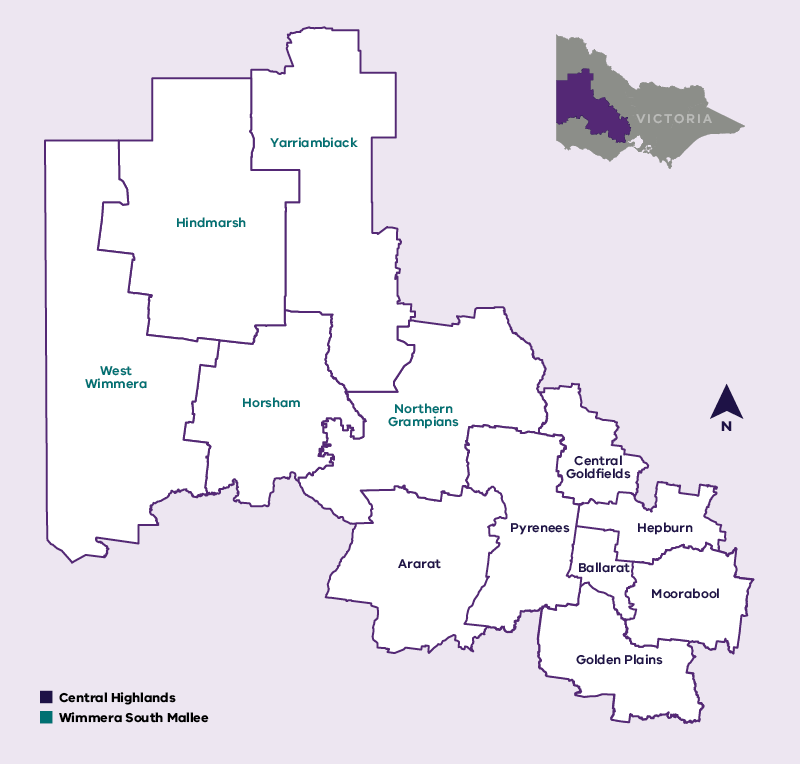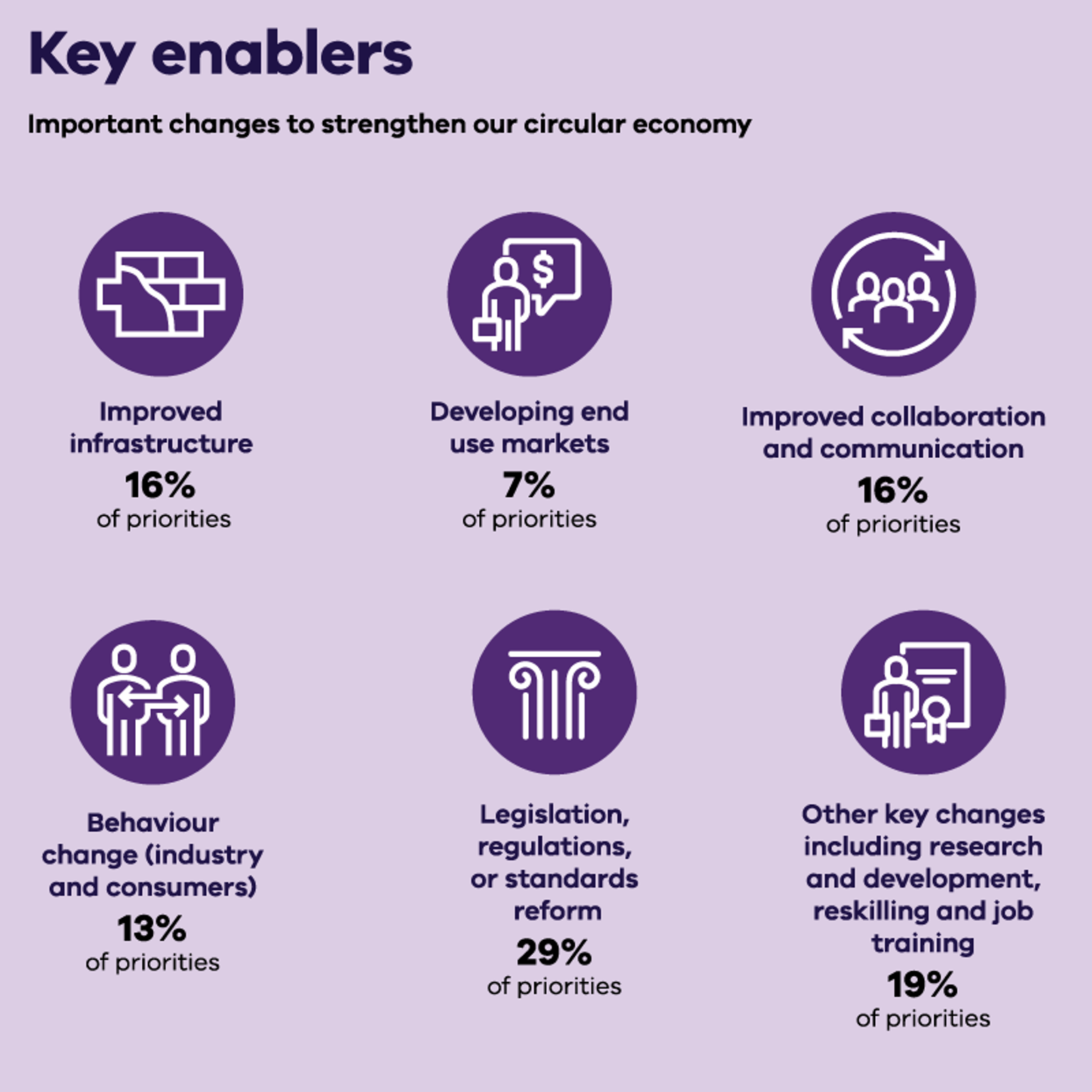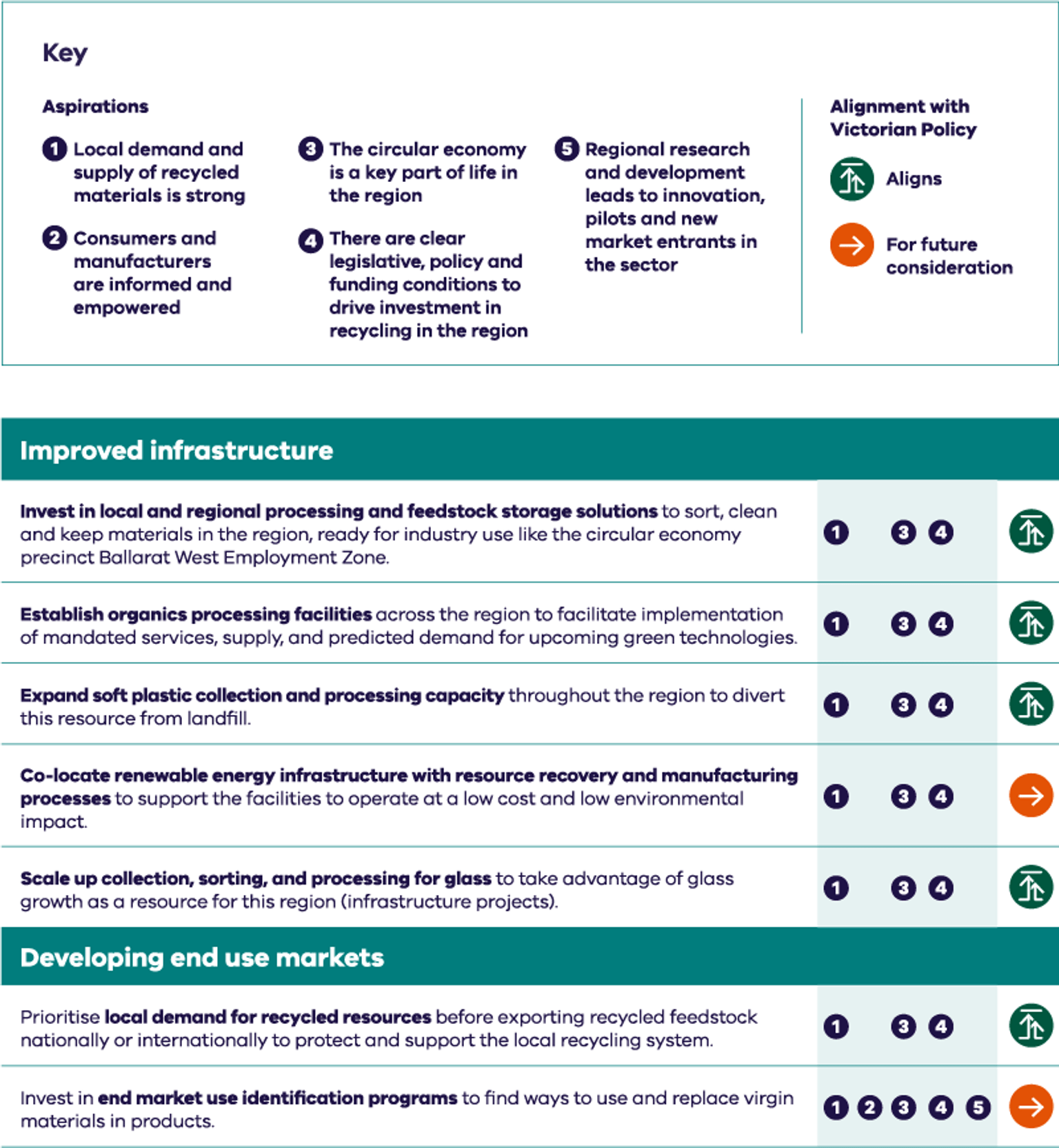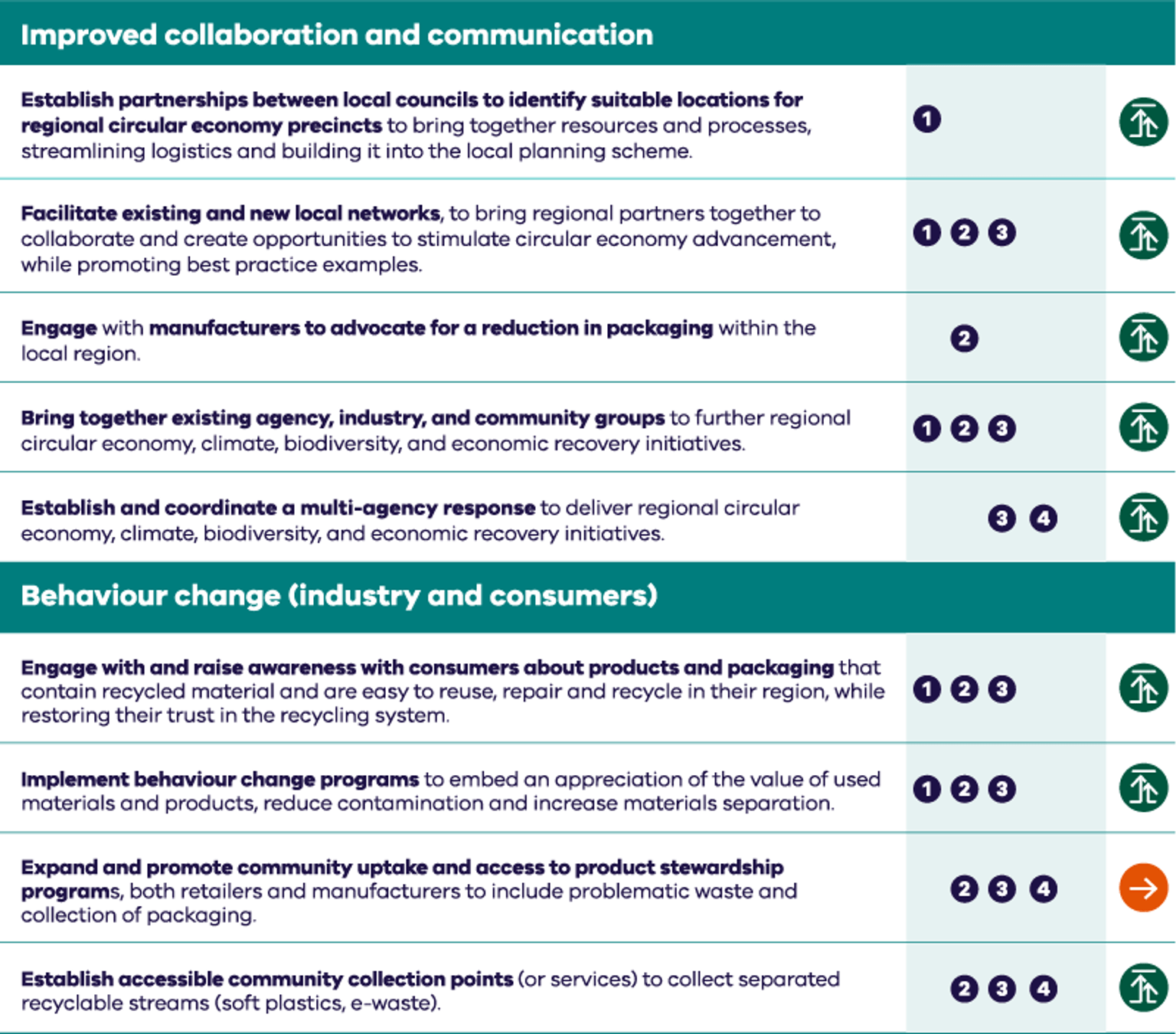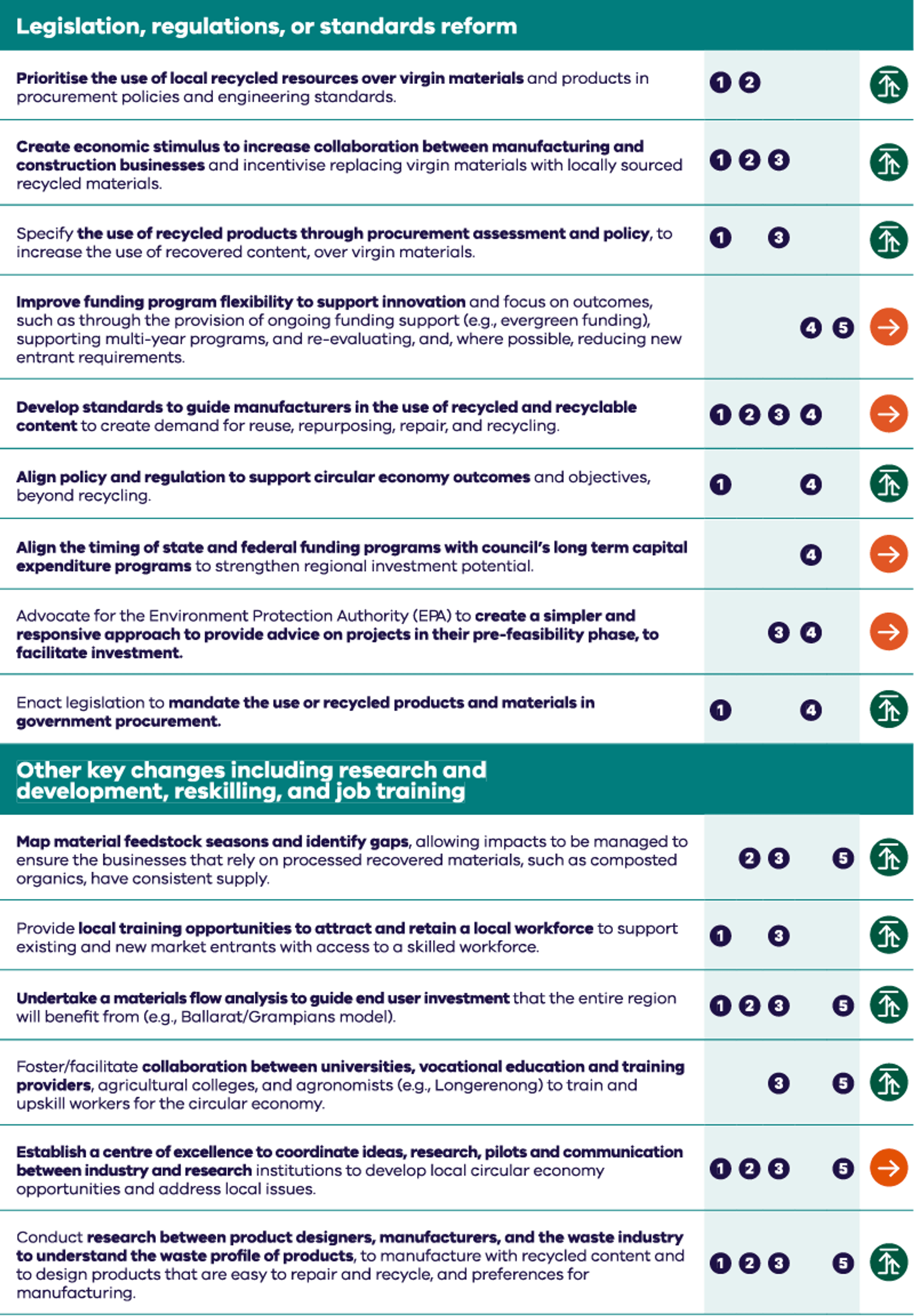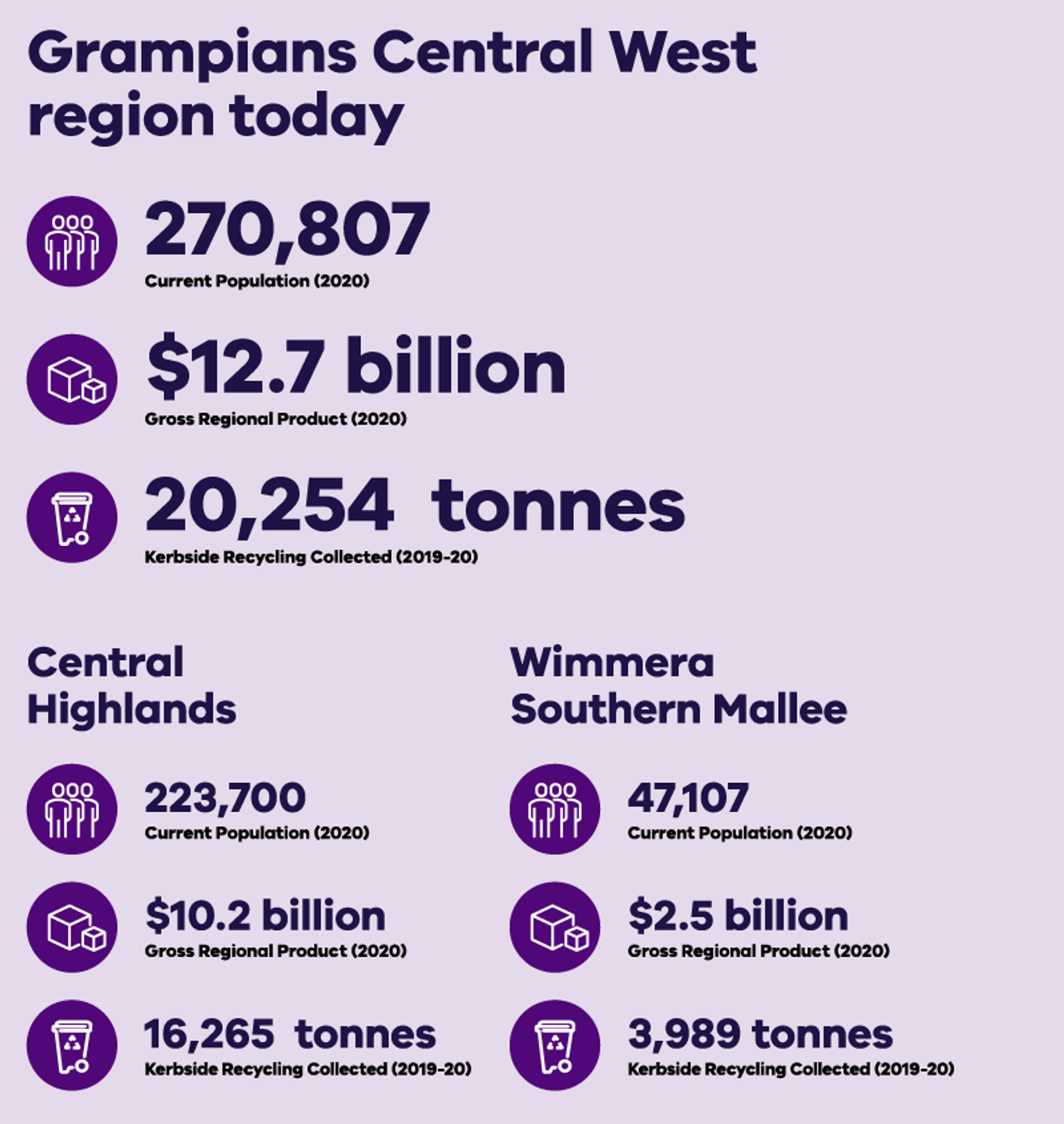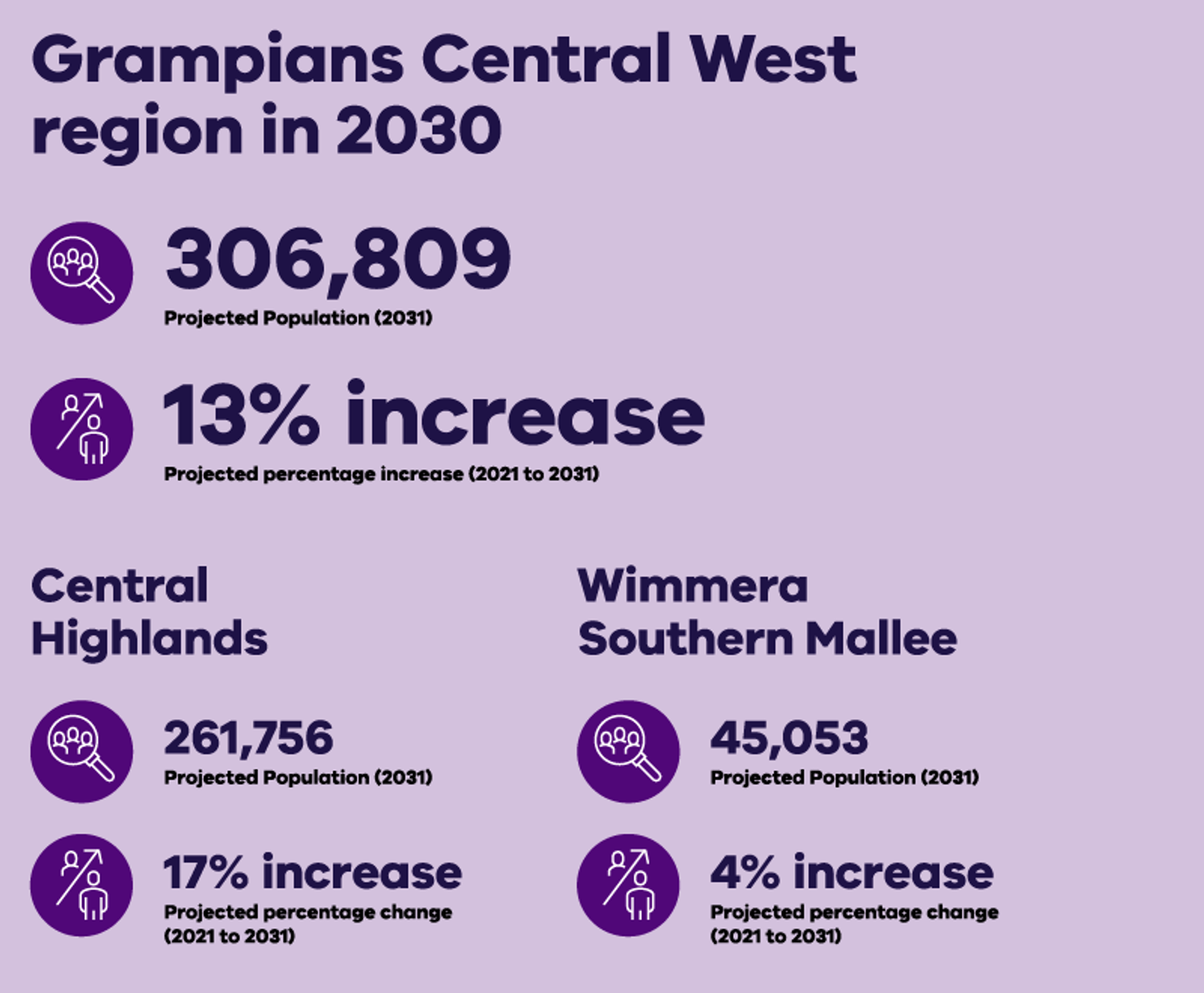The Grampians Central West regional circular economy plan set out the region's aspirations to 2030 for a sustainable and thriving circular economy.
Representatives from 46 organisations to the plan, including:
- local government
- businesses and business associations
- manufacturers
- social enterprise
- the waste and resource recovery industry
- research and education institutions
- and the Victorian Government.
They participated in robust discussions and workshops facilitated by the Victorian Government designed to encourage strategic thinking about their region, where they are now, where they want to be by 2030, and how they can work together to get there.
Aspirations to 2030
Grampians Central West’s five circular economy aspirations to 2030 are detailed below, along with six important changes, or ‘key enablers’, that have been identified to help realise these aspirations.
By 2030, in Grampians Central West
1. Local demand and supply of recycled materials is strong
Recycled materials have been collected, aggregated, sorted and processed within the Grampians Central West region and meet demand needs of the region.
2. Consumers and manufacturers are informed and empowered
They understand how to maximise the value of a product’s life cycle and reduce waste in designing, producing and consuming products.
3. The circular economy is a key part of life in the region
All sectors of the community have clear roles in the circular economy and are supported to participate in it. The circular economy is economically, environmentally and socially sustainable.
4. There are clear legislative, policy and funding conditions to drive investment in recycling in the region
This results in higher uptake of the reuse, repair, repurposing and recycling of materials.
5. Regional research and development leads to innovation, pilots and new market entrants in the sector
A range of design, avoidance and alternative waste material uses has been developed to support new market entrants and pilot programs in Grampians Central West.
Key enablers
Priorities to achieve our aspirations
Grampians Central West has developed 31 priorities to achieve their circular economy aspirations to 2030. Each priority has been identified as contributing to one or more aspiration and has been grouped by Key Enablers. Many of the priorities align with current Victorian Government policy, whilst others will be for future consideration.
Grampians Central West today
Grampians Central West representatives developed the region's circular economy aspirations and priorities. The representatives brought a local understanding of the region’s strengths and challenges. They considered ‘where we are today’ as a region, before projecting forward to ‘where we want to be’ in 2030 and beyond.
The process identified the region's key strengths. These strengths will help the region work towards their 2030 aspirations.
The region covers a large geographic area. This includes the sub-regions of the Central Highlands and Wimmera Southern Mallee.
The Central Highlands has a concentrated population close to Melbourne metro areas. The sub region has high-capacity transport connections, as well as good access to end markets for recycled materials.
In Wimmera Southern Mallee, and across the region, there is interest from the agricultural sector in increasing local capacity for processing recycled organics.
The region's council areas are standardising recycled material streams. This is expected to improve access to material quality and increase opportunities for end use markets.
Refer to Victoria's Regional Economic Development Strategies (REDS) for in-depth economic analysis.
Strengths
- Current trials and new projects underway demonstrate value of circular economy initiatives e.g. Ballarat West Employment Zone.
- Interest from the agricultural sector to increase the capacity of recycled organics processing.
- Proximity to Melbourne with high-capacity transport connections to transport recycled products to markets outside the region.
- Councils standardising waste streams as per the new state government policy position will improve sorting and reduce contamination.
Grampians Central West in 2030
Grampian Central West representatives also considered the region’s challenges.They developed the region’s circular economy priorities to mitigate these challenges.
The region faces challenges with low economies of scale for some recycled material streams. Infrastructure can be hard to access. There are large distances between processing and manufacturing facilities. It can also be expensive to access small processing facilities.
There are barriers to supporting innovative circular economy outcomes. This includes securing government funding and limited council staff resources. Existing long term government contracts can also be a challenge.
By 2030, the Grampians Central West region is forecast to be home to 306,809 people, increasing by 13% from 2021 to 2031. Only Central Highlands is forecast to grow, by 17 percent. Wimmera South Mallee is forecast to decrease by 4 percent.
Higher rates of waste and recyclable materials are likely where populations increase. This will increase demand for sorting, processing, and storage infrastructure. Increased material transport out of the region will place added pressure on regional roads.
Some areas that are not forecast to increase their populations may continue not to need household collection. This could present a challenge for local councils and industry aiming to divert materials from landfill.
Refer to Victoria's Regional Economic Development Strategies (REDS) for in-depth economic analysis.
Challenges
- Low economies of scale of some waste streams, high relative costs of small processing facilities, which reduce the cost effectiveness of recycling.
- Issues with existing infrastructure, including power grid and transport distances to some districts discouraging investment in processing and manufacturing facilities.
- Lack of locations available for sorting and processing purposes, particularly for smaller projects.
- Lack of staff resources and high costs prevent councils from pursuing circular economy projects.
- Set up of current contract lengths, five-to-10 years prevent market competition could stifle innovation and the success of new projects.
- Current grant application process and approval framework for funding of new projects discourages interest and innovation.
- Waste streams such as food and garden organics waste are prone to contamination.
Grampians Central West regional circular economy plan
Engagement Program Summary Report
For more information on the Engagement Program refer to the regional circular economy plans engagement summary report.
Updated

